Original article published on Royal Huisman webpage
Godfrey Cray is the owner’s project manager on his third Royal Huisman build… …after 58m / 190ft Ngoni (2014 – 2017), 56m / 184ft Aquarius (2015 – 2018) and now 65m / 212ft Aquarius II (2022 – 2024).
Question 1 – What are the specific objectives for this larger sister ship? In particular, what established features and benefits of Aquarius are the owners totally committed to preserving and retaining on Aquarius II; and what new opportunities or additional benefits do they hope to enjoy as a result of building Aquarius II?
Godfrey Cray: The objectives for Aquarius II (AQII) were:
- Sailing performance to be commensurate with the length increase from AQI
- Increased cabins and living spaces for owners and guests
- Increased crew accommodation and service areas
- To take advantage of fully tested innovations and system upgrades
- Continuing focus on quality and reliability
Considerations:
- The owners were very happy with the current yacht. Particularly the modern classic exterior look, balance and sailing performance by Dykstra Naval Architects and the interior layout and décor from Mark Whitely Design.
- We have a wealth of experience and knowledge to draw upon with the captain, engineers and crew from AQI all well-qualified to augment the design, systems and fit-out for the new project.
- In general, by going from 56m to 65m overall length, we have gained close to 45% more volume. This has led to the following:
- A fourth guest cabin.
- A big increase in size for the gym as well as the social areas of the main deck house. The larger owners’ deck house now has offset stairs which allow for a wrap-around sofa and lounging configuration.
- The exterior cockpits and social spaces have also increased in size.
- A larger galley, crew mess and laundry, along with an extra crew cabin, all reflect the owners’ commitment to providing a good living and work environment for the crew.
- The engine room and technical spaces have also been enlarged.
- Sailing and performance.
- There has been an extensive study, tying in the naval architects, spar designers, sail designers and consultants to ensure we have a very well-balanced, easily driven and powerful sailing yacht.
- An efficient lifting fin keel with 7.6m / 25ft of draft has been incorporated.
- Early in the design process the owner expressed his commitment to sailing performance, which has driven the rig heights and sail areas: main mast 67.5m / 221ft, mizzen mast 60m / 199ft, upwind sail area 1,958m2 / 21,000ft2, downwind sail area 4,671m2 / 50,700ft2
- Sail handling and sailing systems has been in continual development with Rondal, Doyle and Royal Huisman. We are fully aware of the need to be able to push the yacht hard in racing conditions with a crew of 30 and then safely cruise and deliver the yacht with minimal numbers of permanent crew.
- We have had winning racing results with AQI and the objective has been to continue learning and add this experience to the development of AQII


Question 2 – How did the owners and their advisers arrive at the length of 65m / 212ft for Aquarius II – an increase of 9m / 30ft over Aquarius. Were other lengths considered and, if so, what factors made this the ideal choice?
Godfrey Cray: Firstly, the design issue with sloops approaching 50m and ketches of up to 60m / 199ft is a matter of keel draft and sail area. If either of these are limited, then performance will be compromised.
- Keel Draft – Typically 4.8m / 15.7ft of draft allows yachts to get into most of the desirable cruising locations. But 4.8m of draft really restricts sailing performance. A lifting keel is one of the cleanest and most efficient ways to add draft, stability and improve sailing performance. There is a small adverse effect on interior volume. We are at keel up 4.8m and keel down 7.6m / 25ft.
- Sail Area & Mast Height – One of the limiting factors is transiting from the Caribbean to the Pacific under the Bridge of the Americas in Panama, which has a “Panamax” air draft limit close to 62.5m / 205ft. Interestingly we saw that recently a sloop with a rig height of around 64m / 210ft had, in a heeled state, transited under the Bridge of the Americas.
So, to achieve the required increase in interior spaces and taking into account a mast height of 64m / 210ft, led us to an overall length of 61m / 200ft with a plumb bow, bowsprit, submarine anchors, lifting keel and a main mast of 64m / 210ft. This was starting to look like it ticked all the boxes. However, a final check with the port authority in Panama informed us they were no longer entertaining a heeled-state transit under the bridge. Oooops !!!
In further consultation, the owner re-stated that he wanted no compromise to the sailing performance and therefore we should make no concessions for Panamax. He also reiterated his preference for a spoon bow on similar lines to AQI.
No longer constrained by mast height, and with a spoon bow and no bowsprit, we pushed the length out to 65m / 213ft and the main mast height up to 67.5m / 221ft, along with a conventional, simple anchor system. At 65m / 213ft we achieved the extra cabins, increased luxury spaces, increased services areas and crew spaces.
Question 3 – With extra hull volume, will AQII have additional, or more sophisticated, operating systems? Or will a similar systems specification simply have more space/ better access?
Godfrey Cray: Firstly, our goal with AQI was to keep it as simple as possible within the bounds of a luxury superyacht. By the nature of a superyacht, this is mostly unachievable but it does steer the project away from risky innovation projects. The same mantra applies for AQII. That said, we have incorporated some current but tested developments including:
- Semi-hybrid power generation, battery and load smoothing.
- Climate Control improvements.
- Side boarding arrangements.
- Lifting keel system.
- Sail and mast design take advantage of the load reductions offered by Doyle Sails Structured Luff developments, along with Carbo-Link’s solid carbon Elipse rigging.
One of our biggest gains is the experience and knowledge of system design and improvements that are coming from AQI.
Question 4 – It is said that, from a distance, Aquarius II will be difficult to distinguish from her smaller sistership. But are there, perhaps, subtle design differences that may not immediately be obvious? For example, the ratio between hull length and air draft? Or the additional hull length being allocated to some sections of the hull disproportionately to others?
Godfrey Cray: As you say, the differences will be subtle. Some little changes in the sail plan. Forestay down a touch, main and mizzen mast height ratio slightly different. Slightly lower deck house heights in relation to the overall length.
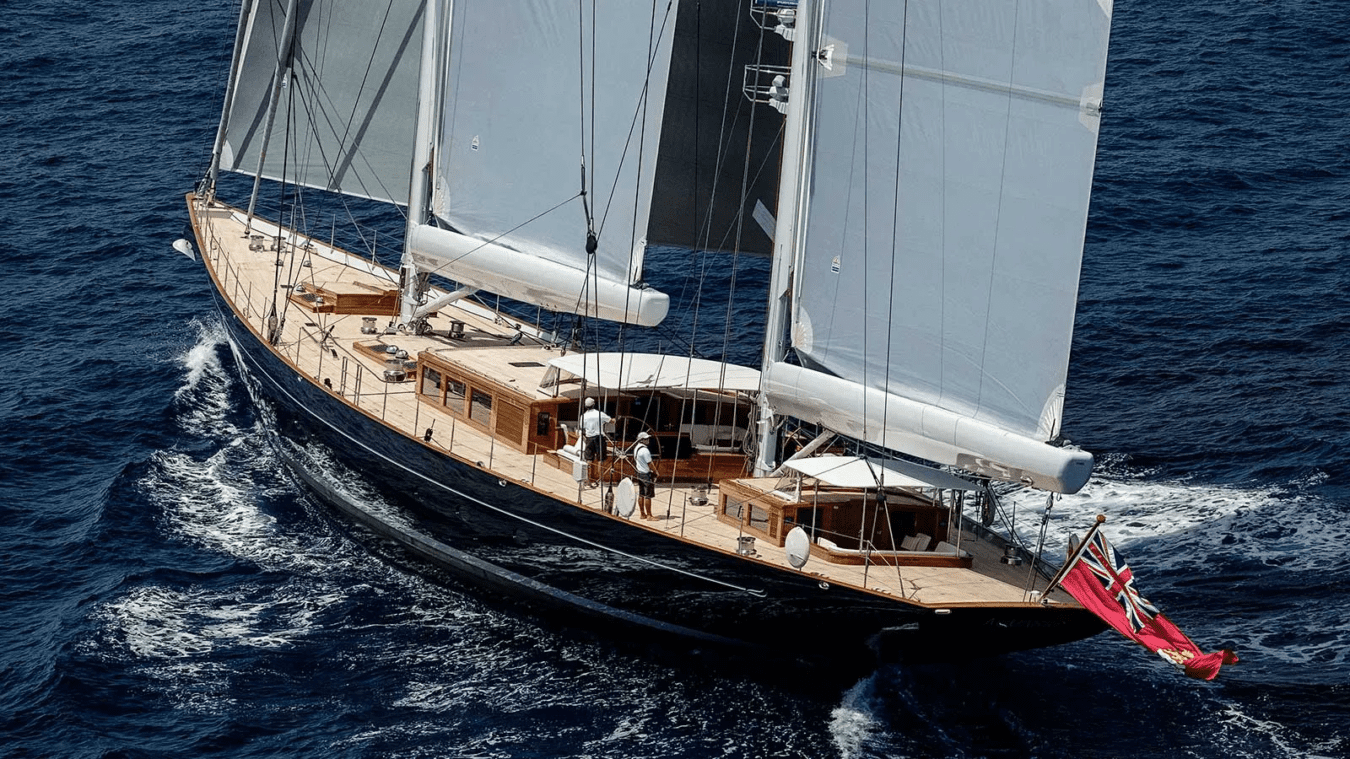
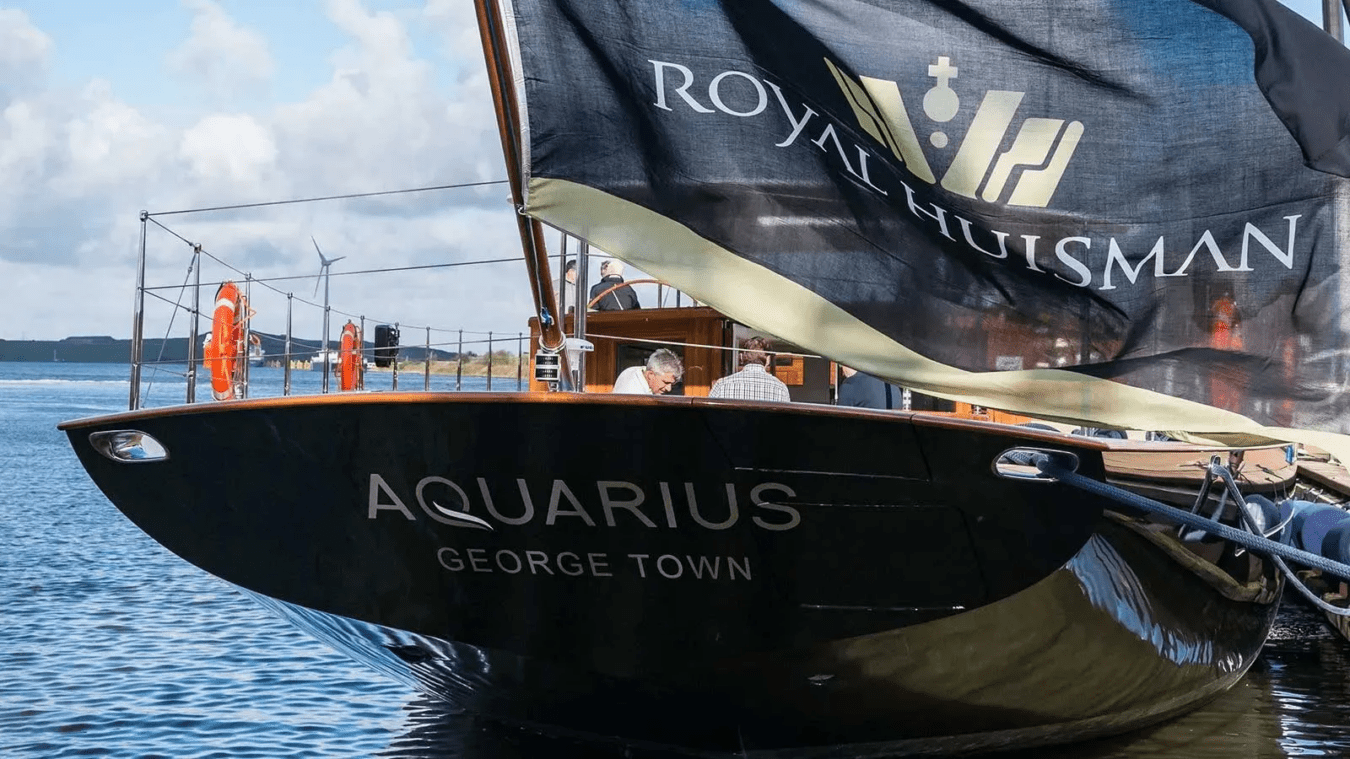
Question 5 – Turning to your experiences and impressions of working with Royal Huisman on three individual projects over some eight or more years: since you first came to Royal Huisman as owner’s project manager on Ngoni, there have been many changes and developments at the shipyard. From your perspective, what aspects of RH’s capability and service are you pleased to see remain consistent? What new developments are you pleased to welcome and are there any that you are less certain about?
Godfrey Cray: There is still the commitment to quality and innovation, which is very pleasing. Also in general there is a can-do attitude, always looking for solutions. In terms of innovation and development, RH has a good history with this but some clients may not fully understand all the implications of what they are asking for. It has been a tough time over the last 10 years for sailing yacht builders so it is nice to see Royal Huisman in business and with a full order book. The world needs another two to three large sail yacht builders!
Question 6 – Over the same period, Royal Huisman has been at the forefront of significant new developments in advanced propulsion, power generation and energy management systems. Do you see the incorporation of these benefits as a natural progression for AQII – or are there any aspects of these new developments you consider of limited value for such a project?
Godfrey Cray: This is mostly covered in my answer to your third question. However – re your reference to developments that may be “considered of limited value” – this is dependent on the desire of the owner and their team for innovation; and of their understanding of all the good and bad that comes with it. Some innovations may be seriously cool and add function and enjoyment. However, they can come with development, time, cost and reliability issues.
Question 7 – You will be well aware that Royal Huisman recently built the 58.5m / 192ft motor yacht PHI (2021) and will deliver the 52m / 171ft sport fisher Project 406 this year. What is your view of one of the world’s premier custom sailing yacht shipyards building specialised motor yachts alongside its mainstream super and mega sailing yacht projects?
Godfrey Cray: I liked the proportions of PHI which were likely driven by its length and having to stay under 500GT. I would say, if you have the option, stick with sailing yachts as they are the hardest to build and Royal Huisman is good at them. Delving into the motor yacht market with so many builders may prove to be tough. I certainly would not approach a motor yacht builder to build a high tech sailing yacht.
Question 8 – Was the choice of Royal Huisman to build AQII an automatic choice, given their detailed knowledge and experience of Aquarius? Or were there other considerations to resolve before that decision was taken?
Godfrey Cray: We invested a lot of time, effort and trust in Royal Huisman to build AQI. A continuation with the shipyard was always more than likely.
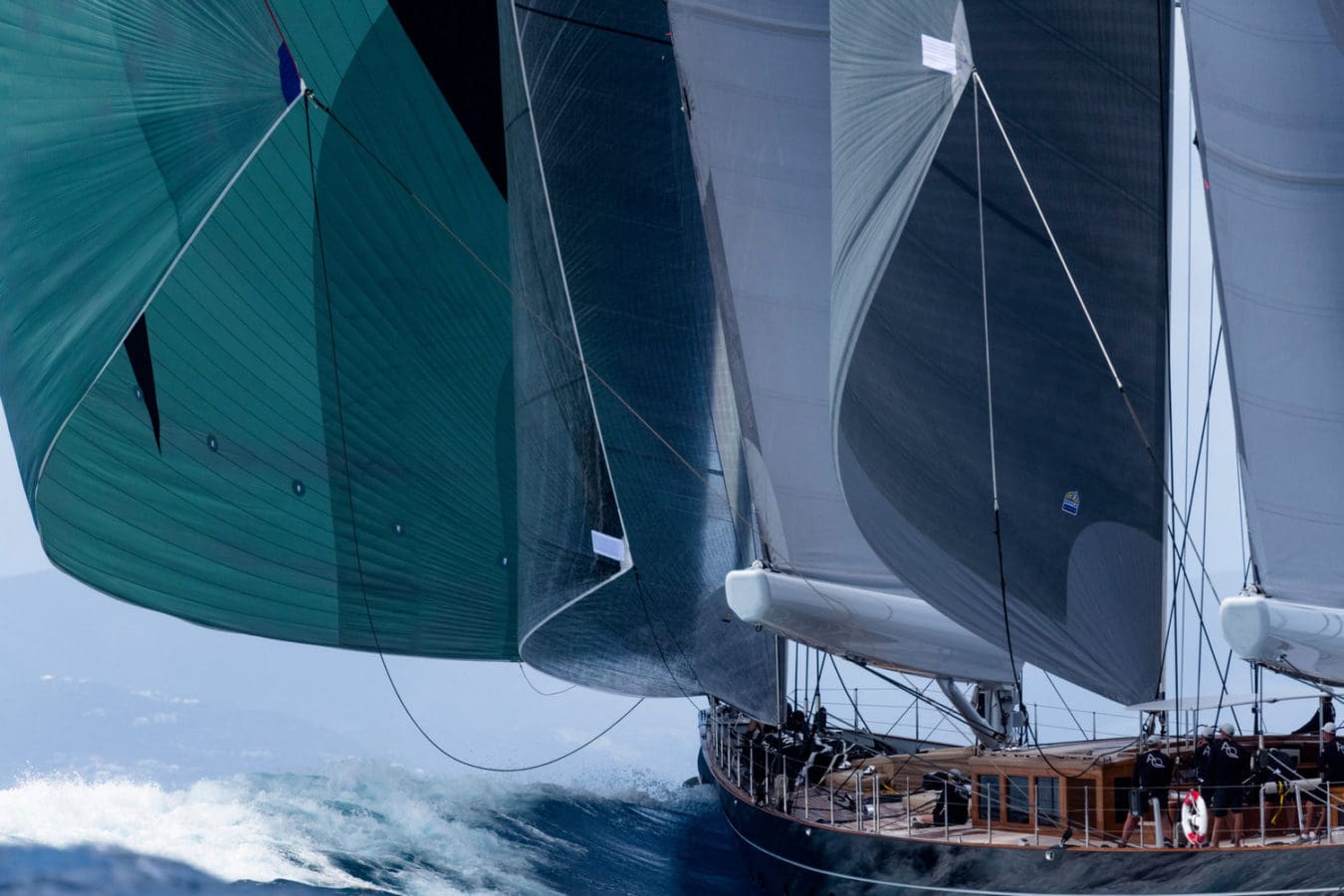
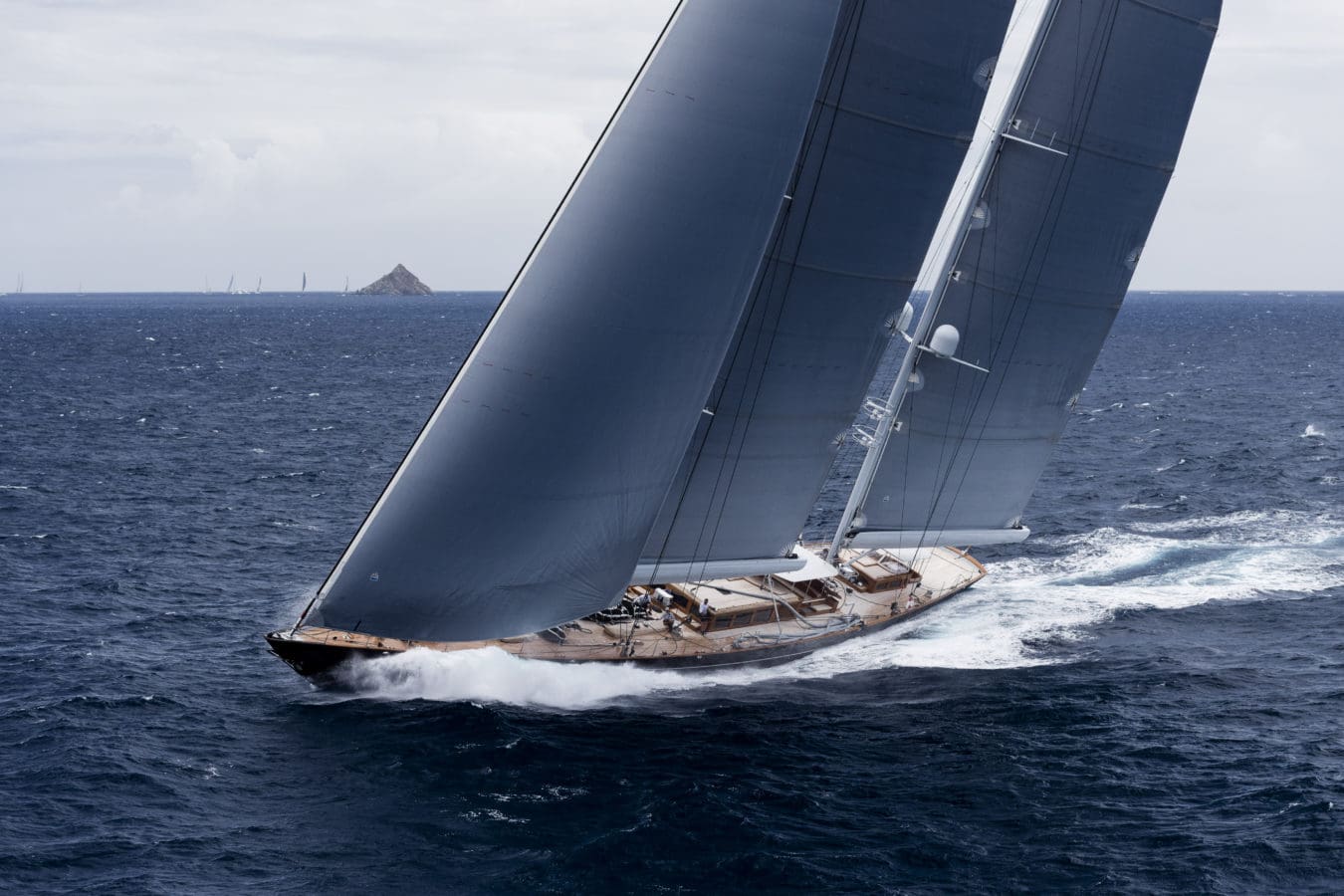
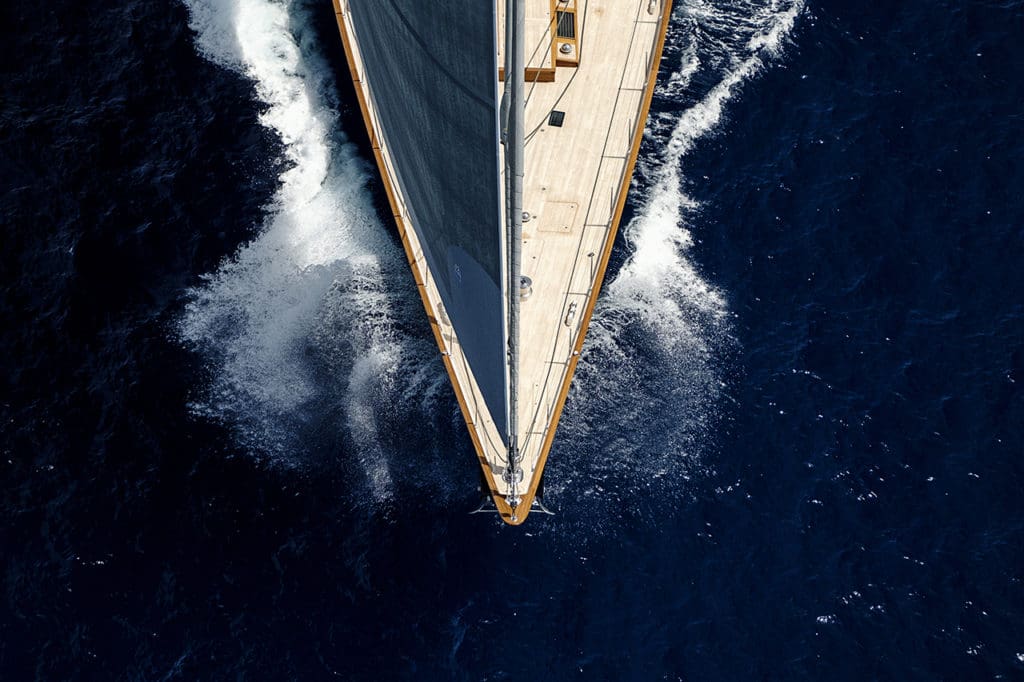
Main specifications
Aquarius II | Royal Huisman project 408
Type: Performance Ketch
Length: 65m / 212ft
Owners’ project manager: Godfrey Cray
Naval architecture + exterior styling: Dykstra Naval Architects
Interior design: Mark Whiteley Design
Construction: Alustar® aluminum
Rig + handling: Rondal carbon rig + Integrated Sailing System
Sails : Doyle Sails
Learn more about Aquarius II at this website > yachts > under construction [link].
ABOUT DOYLE SAILS // Doyle Sails strives to deliver success through high-performance, high-quality, custom sails that continue to redefine the boundaries of sailmaking technology and innovation; whilst connecting sailors to inspire, support and encourage sailing.
Our obsession with sailing takes us to every corner of the world and onboard every yacht. We become part of teams, share in the adventures of friends and families, sharing our knowledge and experience with those with the same passion. Sailing is in our DNA, and we are the custodians of a legacy that has been supporting sailors for four decades and counting.
